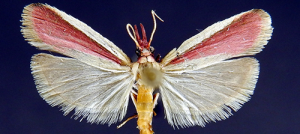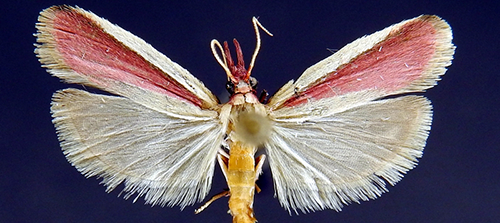Our insect of the week for August 12, 2024 is the Polyphemus moth (Antheraea polyphemus). I htought it was time to feature another group of insects. This species is classified in the order Lepidoptera, family Saturniidae). This species was described by Pieter Cramer in 1776 (yes, the year we became a country). It is easily recognized by its large size (wingspan roughly 6 inches) and the large eye spots on the hind wings. Those eye spots are what gave inspiration for the name (from the Greek legend of the cyclops – Polyphemus). Although widespread in the U.S., populations seem to be declining. There are two broods each year (one group of adults emerge in early spring, the other in late summer). In fact, I often saw the adults as I was walking on the Illinois Central College campus as fall classes began in late August). Adults mate and the females lay eggs. The mouth parts are vestigial so the adults do not eat and live roughly a week. Caterpillars hatch from the eggs and molt five times (the last molt is to the pupal stage). Fun fact – when the caterpillar emerges from the egg, it eats roughly 86,000 times its weight as it grows over two months. I have seen caterpillars nearly 4 inches long. Males and females differ (males have larger antennae to seek out females; females have larger bodies as they are producing many eggs). You should be seeing adults in the next few weeks (if you haven’t already). Let us know when and where you see them. They are typically near wooded areas as the larvae prefer leaves from a variety of trees.

Peoria approximella (a moth named in New York for Peoria, IL). Photo of Michigan specimen courtesy Jim Vargo (used with permission).
About us
Our main goal is to encourage participation in the study and appreciation of the insect world around us. this is accomplished through field trips, educational programs, sharing experiences, and insect photography or collecting. Meetings are usually held at 9 a.m. on the third Saturday of each month (the location will vary). Check out the Activities page to examine the current schedule.
The moth image that you see on our pages is Peoria approximella (Walker, 1887). [Pyralidae: Peoriinae – HODGES 6053]. Common name: carmine snout moth. Since we are located in Peoria, Illinois, it seems only appropriate for us to use this image on our page.
We are a section of the Peoria Academy of Science (Peoria, Illinois).
Categories
Archives
- June 2025
- May 2025
- April 2025
- March 2025
- February 2025
- January 2025
- December 2024
- November 2024
- October 2024
- September 2024
- August 2024
- July 2024
- January 2024
- January 2023
- January 2022
- May 2021
- April 2021
- February 2021
- June 2020
- January 2020
- October 2019
- July 2019
- June 2019
- May 2019
- March 2019
- February 2019
- October 2018
- August 2018
- February 2018
- January 2018
- June 2017
- May 2017
- April 2017
- March 2017
- February 2017
- January 2017
- November 2016
- October 2016
- September 2016
- July 2016
- June 2016
- May 2016
- April 2016
- March 2016
- February 2016
- January 2016
- March 2015
- January 2015
- January 2014
- August 2013
- May 2013
- April 2013
- February 2013
- January 2012
- January 2011
- February 2010
- June 2009
- May 2009
- April 2009
- March 2009
- February 2009
- December 2008

